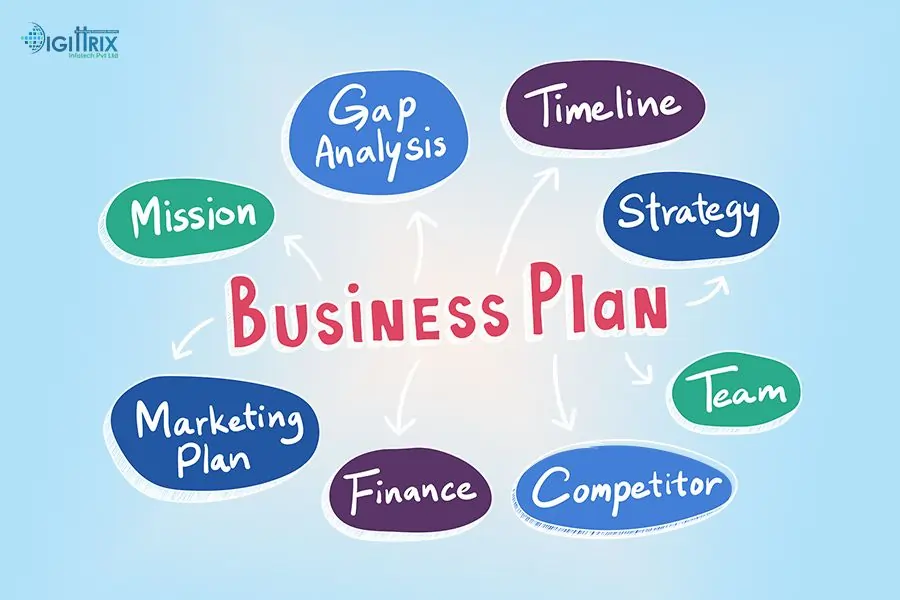Requirement analysis is crucial for the success of software and technology development projects. Efficient approaches like using case studies, user stories, and prototyping help businesses quickly document and align requirements with their goals
Highlights
With Over 14 years of Experience in the IT Field, Helping Companies Optimise there Products for more Conversions

The process of identifying user expectations for a new or changed product is, by definition, requirement analysis. The traditional requirements analysis steps are stakeholder and end-user identification, individual and group talks, workshops, categorization of requirements, and interpretation and documentation of the technology requirement specifications. GAP analysis, BPMN, Flow charts, UML diagrams, use cases, and user stories are comparable to traditional methodologies.
Traditional tools and approaches for requirement analysis have a proven track record of performance. However, these approaches demand a lot of time, money, and input from several people. For example, holding workshops, speaking with stakeholders and end users, conducting form-input campaigns, and identifying and resolving issues all require time and human resources, which adds to the expense.
Please refrain from making assumptions about what requirements analysis is or how it might be precise and effective if you do not want to put in the effort. Yes, I completely agree that these strategies are worthwhile if they are used at the organizational level and with clear business goals. Here, I offer an alternate strategy for entrepreneurs, startups, and established companies looking to investigate the digital aspects of their business models quickly and affordably.
Technology requirements that are related to the context can be divided into two groups: those that are built to solve a specific social problem and develop business models using technology, like the Swiggy or Uber apps, and those that are designed to find solutions to specific business problems. Examples of the latter include organizations that want to manage operations digitally, like inventory, production, or sales management. In both situations, we take the following tack.
We live in a time when there is a deluge of software available for every industry, including communication, sales, CRM, ERP, social networking, dating, tours, and travel. Just pick the industry and we can search for the top 10 tools out of hundreds. Therefore, determine the dedicated domain and objective and have a case study that will almost entirely satisfy the requirements. We can easily write it down, and that document could serve as the foundation for further requirements analysis, which is actually what is happening from the perspective of the product owner and business analyst.
Since we are here to support entrepreneurs, startups, and businesses looking to expand without spending a fortune, it is likely that you will only engage with one person in a real-world setting. This excludes end users, stakeholders, operation managers, etc. From a single-person perspective, stakeholders and pertinent functional modules will be discussed. As always, your initial step should be to gather all the necessary information regarding the Web & App Development needs by asking questions. Below, certain cases are discussed.
A person may need a solution for a specific issue, but may not be aware of its technical viability. In this case, as a business analyst, you can easily resolve the issue by analyzing the technical viability, or if the product owner's expectations do not line up with the technical viability point, you can suggest an alternative to handle the issue, and you are already supported by case studies. If a person is only aware of the specific situations that need to be handled to achieve the desired results, the business analyst must make suggestions for various software functional modules, gain the product owner's approval, and document all requirements that can be further improved, clarified and aligned with all user roles.
In this situation, case studies will also help to merge new USPs or provide a custom-designed front and flow with nearly identical functionality. For instance, if someone wants a social networking app, obviously functional modules with will registration, login, profile, wall page, or good experience in the same field, or supportive resources like a great product, professional team, and now he/she wants a dedicated app, If a person is not fully aware of the requirements, the same method should be used: ask a question, offer a solution, get the client's approval, then gather and document.
I would advise classifying requirements into business and Web & App Development requirements. In traditional techniques, requirements would be divided into functional requirements, technical requirements, transactional requirements, and operational requirements. I didn't mean to imply that another requirement classification wasn't significant; that method is excellent and best in class, but we need to perform a rapid and affordable requirement analysis in this case.
Business Requirement: The goals, vision, and objectives of the company are connected to the needs of the business. They also describe the scope of a problem or business need that has to be addressed by a certain project or activity. The need for this software product will be made evident by business requirements.
Technology requirement: The technology requirements are broken down into the steps required to satisfy the business demand or needs. What functional modules will be included in the technology and how they will solve the problem will be made apparent by the technology requirements.
Use cases and user stories are the chosen documentation tools and methodologies here.
Use cases: Use cases are a way for locating, outlining, and organize system needs in system analysis. The use case consists of a number of potential interactions between users and systems in a specific environment that is connected to a specific objective.
The general format of a use case is the system will show a particular screen and the user will perform this event and the system will handle the event in this manner. Basically is system-user interaction to perform a task on a web or mobile application. Use cases add value because they help explain how the system should behave and in the process, they also help brainstorm what could go wrong.
User stories: A user story is a short, simple description of a feature told from the perspective of the person who desires the new capability, usually a user or customer of the system. User stories typically follow a simple template:
As a < type of user >, I want < some goal > so that < some reason >.
Example: As a customer, I want a shopping cart feature so that I can easily purchase items online.
A user story is also part of agile methodology which is also a great help to design and develop a Minimum viable product. In this way, requirements can be prioritized and an initial effect can be launched cost-effectively with fewer efforts. Agile methodology is supported by continuous integration and continuous development techniques with software design patterns that are easily expendable.
Now we have backed with well-documented requirement analysis but we can do some more efforts to prototype our technology with wireframes, graphic mockups, and interactive prototyping that will be a great help for the client or product owner to visualize the final product even before the exact development. Some great tools are available to do prototyping such as Adobe, Figma, mock flow, a visual paradigm, and more.
The suggested approach is quick and efficient, but it's a shortcut that can't be compared to the traditional method, which makes use of advanced techniques and tools for things like gap analysis, BMPN, documentation, and presentation. However, this approach has its own area of application to work with some technology development concepts.
A custom website and app is an excellent tool for staying organized and accessing content with ease. To ensure your website meets all your needs, it should include features such as an intuitive and user-friendly interface, robust search functionality, and easy-to-navigate. Additionally, your app and website should have integrated eCommerce capabilities for online transactions, secure user authentication for data protection, and interactive elements like contact forms and live chat for enhanced user engagement. For a personalized touch, choose a website that offers customizable themes, integrated analytics tools, and options for search engine optimization (SEO).
If you want to develop your app and website like this contact Digittrix.
Build a custom website and application with us. We are a leading website and app development company with 14 years of experience and expert developers at DIGITTRIX!
If you too want to build a custom website or application and are unsure of how to begin the process, schedule your appointment or book your consultation today with our expert technical managers by calling +91 8727000867
or write to us for all your queries at digittrix@gmail.com

Do you need help in Web Development ?




Join over 1500+ businesses we've already helped!
Requirement analysis involves identifying and documenting user expectations for a new or modified product. It is crucial because it helps define the needs and expectations of stakeholders, ensuring that the final product meets their requirements and solves the intended problems.
Traditional methods include stakeholder and end-user identification, interviews, workshops, and documentation using tools like GAP analysis, BPMN, flow charts, UML diagrams, use cases, and user stories. These approaches are thorough but can be time-consuming and resource-intensive.
Traditional methods can be costly and require significant time and human resources. They often involve extensive stakeholder engagement, workshops, and detailed documentation, which can add to the overall expense and complexity of the project.
The suggested alternative approach focuses on practicality and efficiency. It involves leveraging existing solutions, conducting targeted communication with key stakeholders, and using case studies to quickly identify and address requirements without reinventing the wheel.

©2025Digittrix Infotech Private Limited , All rights reserved.